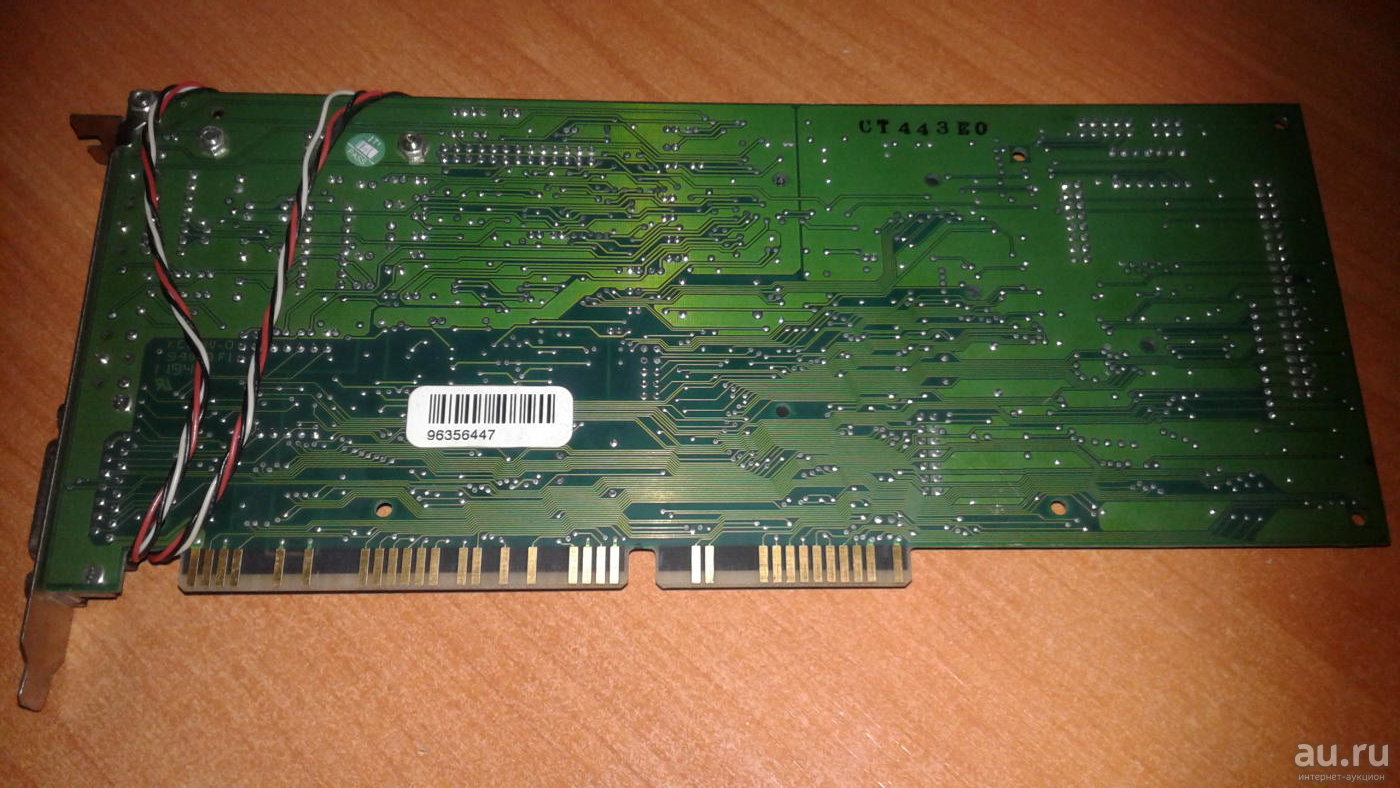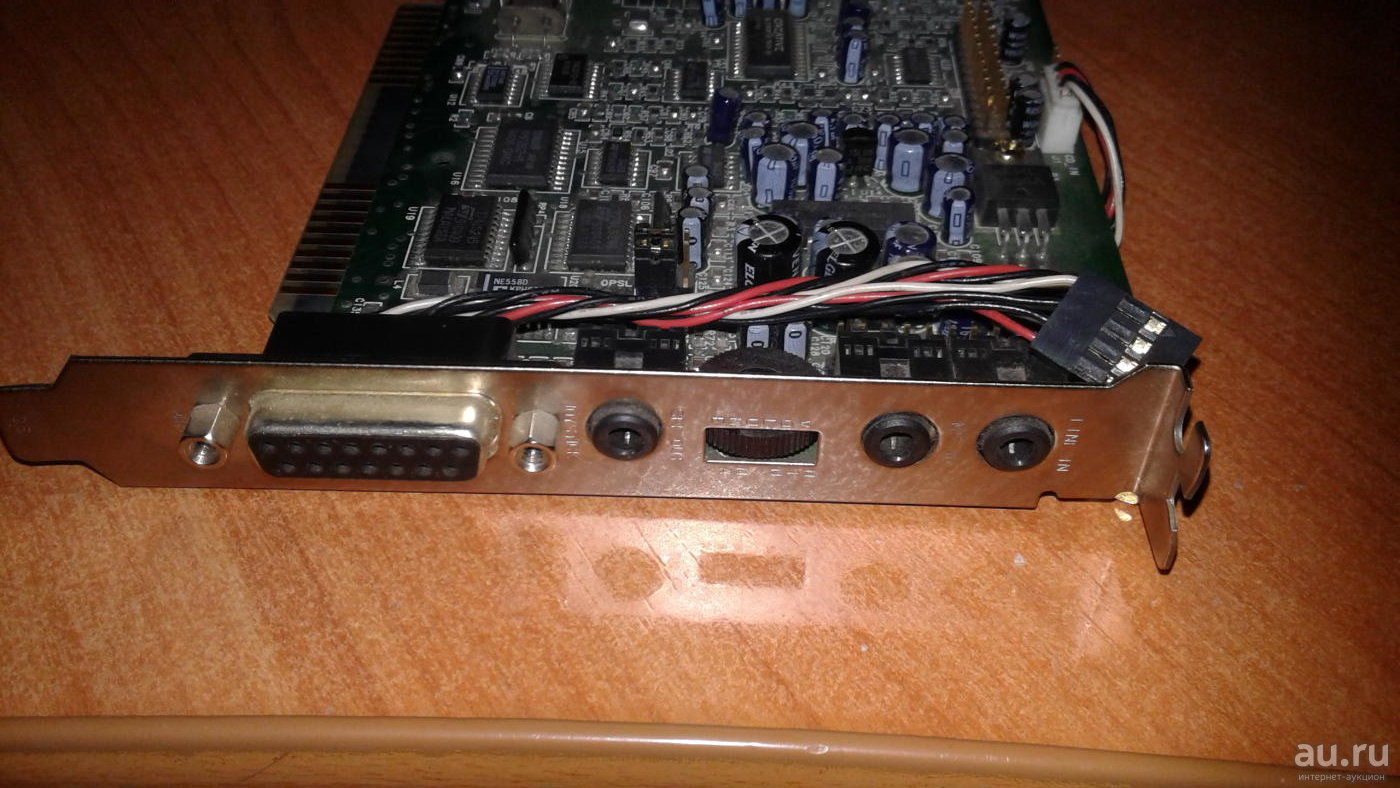Sound Blaster 16 MultiCD (CT1750, CT1759, CT1780, CT2700, CT2709)
The second Sound Blaster 16 arrived in 1993 in the form of the CT1750 and CT1759. It improved upon the CT1740 in its support for other CD-ROM drives.
|
Released | 1993 |
| Bus | ISA 16-bit | |
| FM Synth | Yamaha YMF262 | |
| Audio Codec | None | |
| Standards | Ad Lib, Sound Blaster, Sound Blaster Pro, Sound Blaster 16 | |
| Ports | Speaker-Out, Mic-In, Line-In Game port |
|
| CD-ROM | Panasonic/Matsushita | |
| Wavetable | Wave Blaster header | |
| Plug & Play | No | |
| FCC ID(s) | IBACT-SB16MCD (CT1750/1759) IBACT-SB16LMSI (CT1780) IBACT-SB16MIT (CT2700/CT2709) |
|
| Price | Nov 1993: $159 (no ASP) or $195 (with ASP) Mar 1995: $199.95 (no ASP) or $249.95 (w/ASP) |
|
| See Also | Sound Blaster 16 SCSI-2 (CT1770) Sound Blaster 16 (CT2740) Sound Blaster 16 (CT1740) |
Called the Sound Blaster 16 MultiCD, the CT1750 was a CT1740 but with better support for CD-ROM drives - it got Panasonic, Sony and Mitsumi CD-ROM interface headers.
The CT1759 was almost identical to the CT1750. The CT1750 is sometimes branded Sound Blaster 16 MCD CSP whereas the CT1759 is just Sound Blaster 16 MCD, so it is believed the model number change was nothing more than a marketing decision with the CT1759 being sold without the CSP chip. This is backed up by the fact that the default jumper setting for the CSP chip was set to 'Enabled' on the CT1750, and 'Disabled' on the CT1759.
The CT1780 was the same as the CT1750 with the exception that the CD-ROM interface was for LMSI (Laser Magnetic Storage International) drives. LMSI was a subsidiary of Philips. The interface itself is a 16-pin header. The only other sound cards that came with an LMSI connector were the MediaVision Pro Audio Spectrum 16 LMSI (FCC ID: ICW-PAS16P) and MediaVision Fusion CD16 S/E LMSI.
Despite the model number, the CT2700 is still a 1st-generation card, being almost identical to the CT1750 cards, except that it got only a Mitsumi CD-ROM interface. The CT2709 was an OEM version of the CT2700.
Just like the CT1740, the CT1750/CT1759 also got the thumbwheel volume control on the backplate.
Board Revisions
For CT1750 cards, known board revisions include 19334 and 39346.
All cards came with the CT1745A mixer chip and CT1746B bus interface chip.
They all got the
CT1741 DSP chip, though DSP versions differed between variants: v4.05 (no hanging note bug) and v4.11 or v4.12 (both with hanging note bug).
The CT2700 and CT2709 came with DSP version v4.11 and v4.13 (both with hanging note bug).
They all came with board revision 19334.
Competition
In 1993, Aztech Labs continued their assault on low-end Creative Labs' market with Sound Galaxy NX II, NX II Extra, and NX Pro Extra - the latter of which was their first Sound Blaster Pro-compatible.
Also arriving this year was ESS Technologies' ES488 chip which found its way onto a large number of budget OEM cards sold with PCs. It wasn't a competitor for the Sound Blaster 16 however, offering only Ad Lib and Sound Blaster 2.0 compatibility.
OPTi, a major chipset manufacturer, also released their 82C928 'MAD16' chipset which like the ESS chip, was implemented by lots of cheap Taiwan-based sound card manufacturers and sold in non-brand PCs. As the name suggests, this chip could record and playback in 16-bit.
MediaVision continued to compete directly with the Sound Blaster 16 with an extended range of their PAS16 card including the ProAudio Spectrum 16 Basic, Pro Audio Studio 16, ProAudio Studo 16 XL and Pro Movie Spectrum.
In the Media

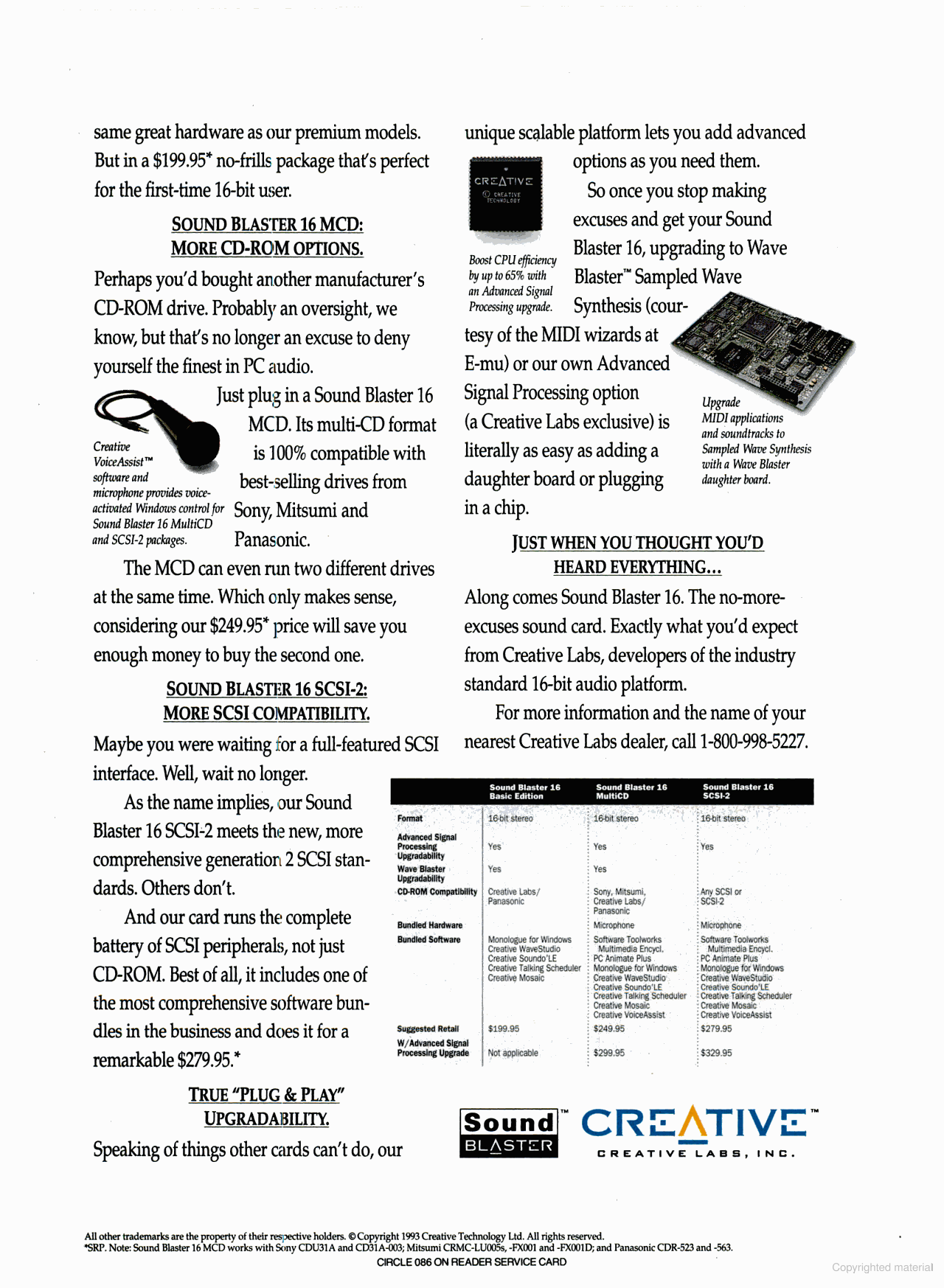
A Sound Blaster 16 advert from 1993


A later advert showcasing the Value Editions of SB, SBPro and SB16, plus SB16 MultiCD and SCSI-2, and the AWE32 (October 1994)

The same advert over 2 pages (March 1995)
Setting it Up
There is no setup or installation details on file for the Sound Blaster 16.
Downloads
Operation Manual Get in touch if you can provide this missing item! |
DOS and Windows 3.1 Utility Disks The original Sound Blaster 16 DOS and Windows 3.1 installation disks, marked Sound Blaster 16 |
. DOS and Windows 3.1 Utility Disks The original Sound Blaster 16/AWE DOS and Windows 3.1 installation disks, marked SDR-31STD-1-US (Revision 1). |
More Pictures
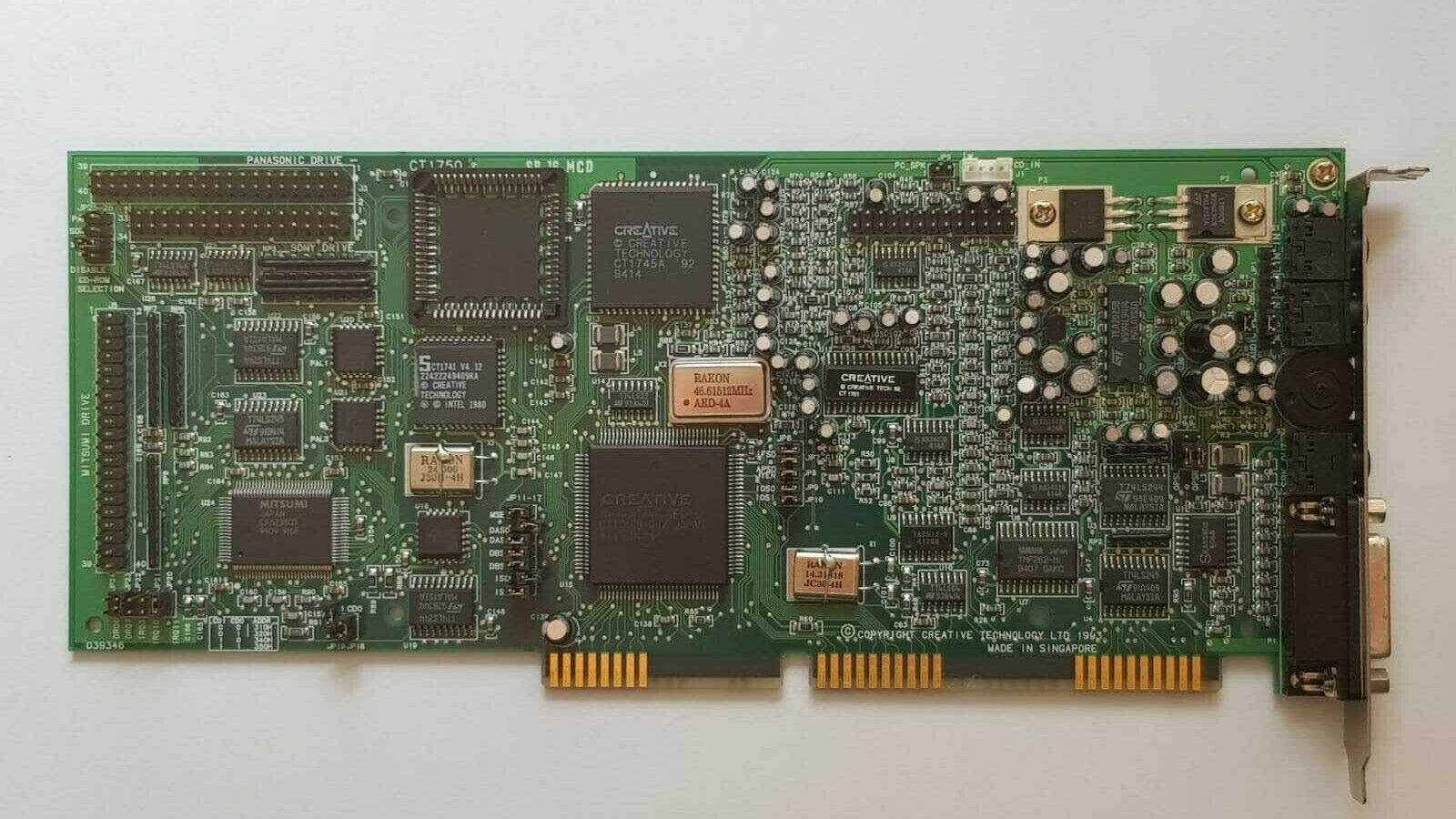



Sound
Blaster 16 (CT1750, board revision 39346)
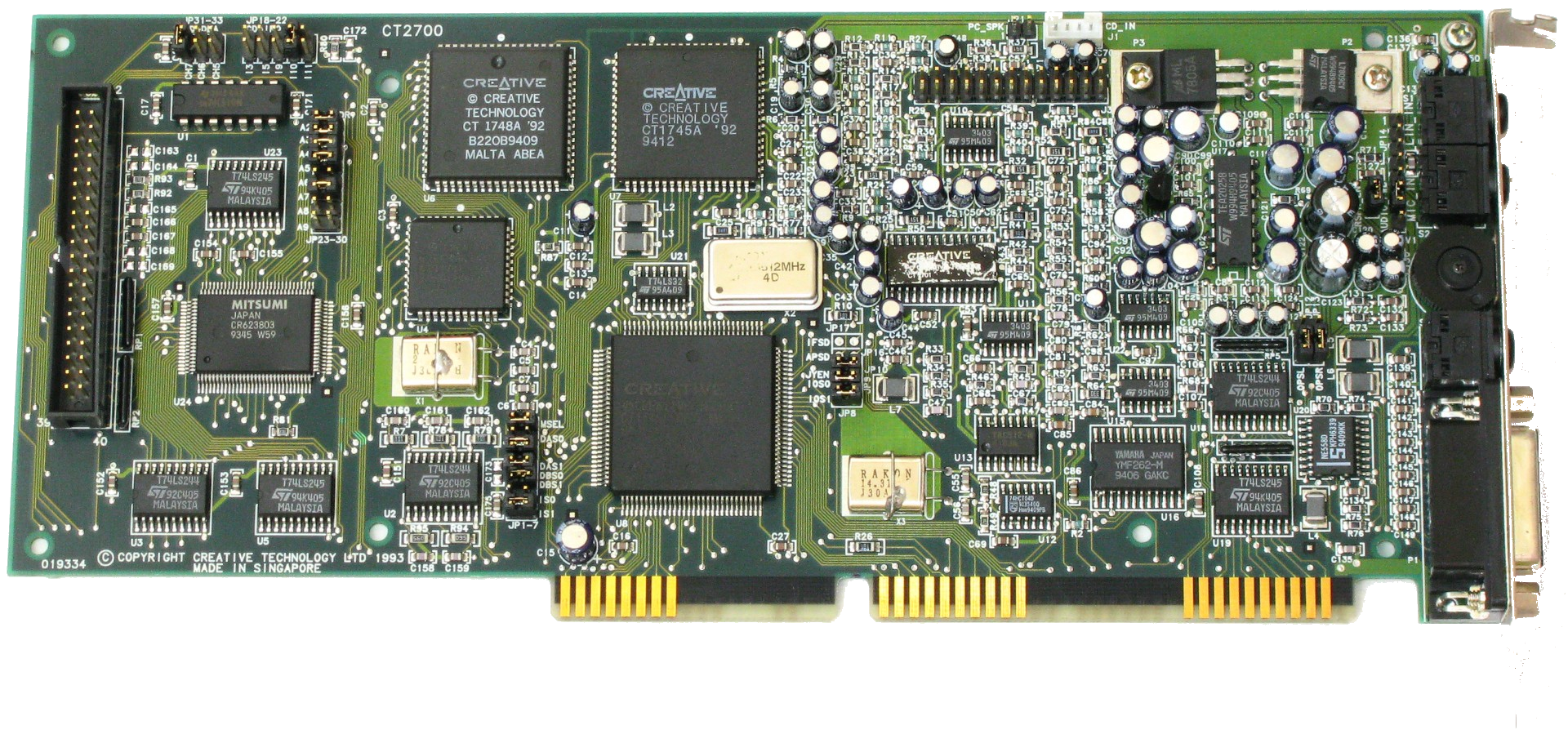
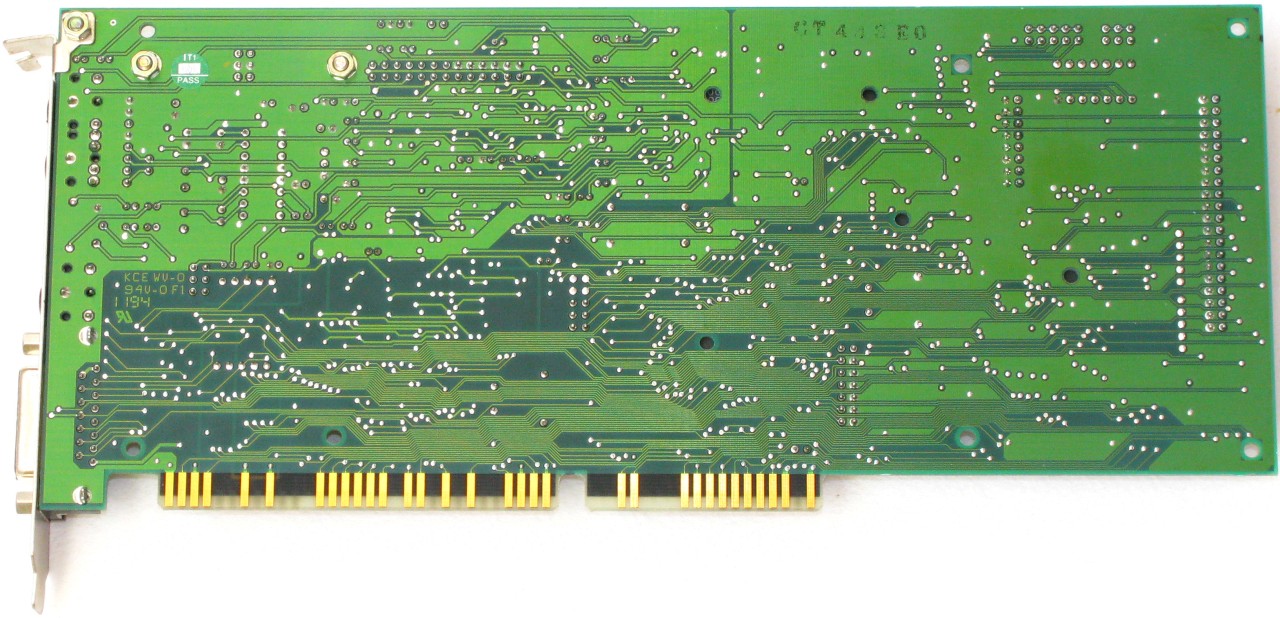
Sound Blaster 16 Mitsumi (CT2700, board revision 19334)
